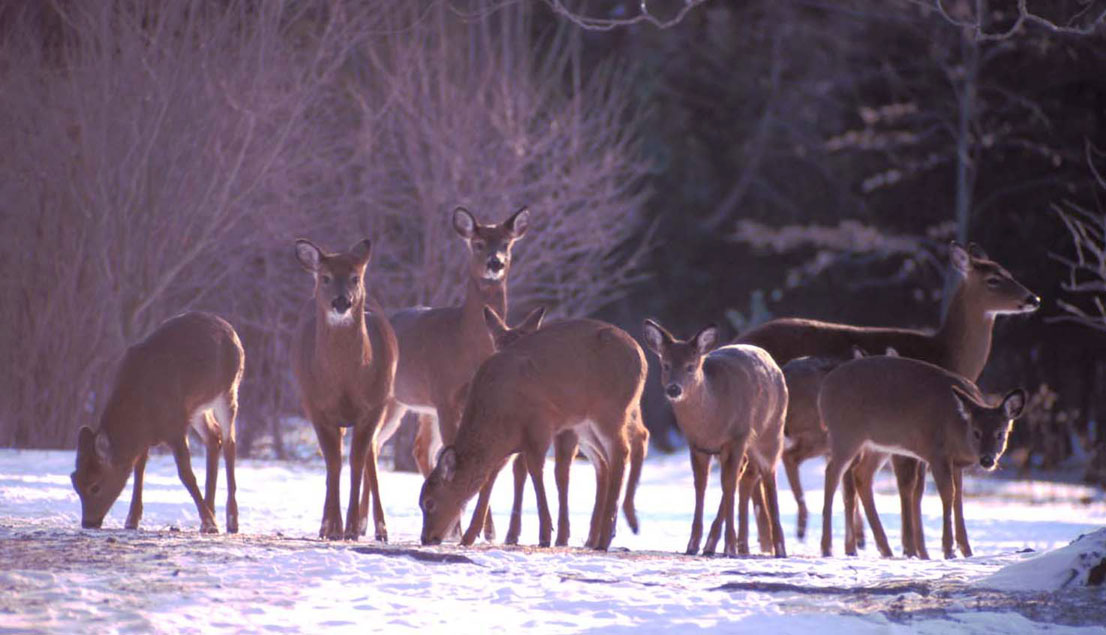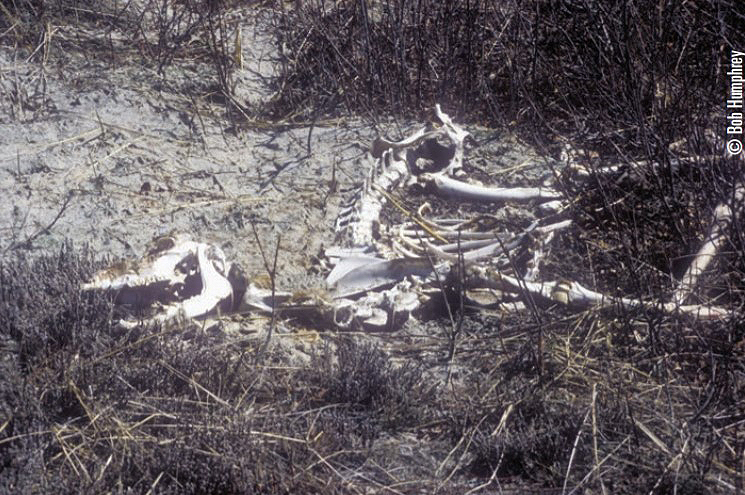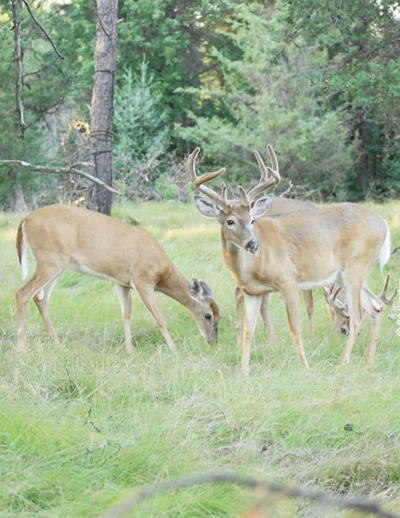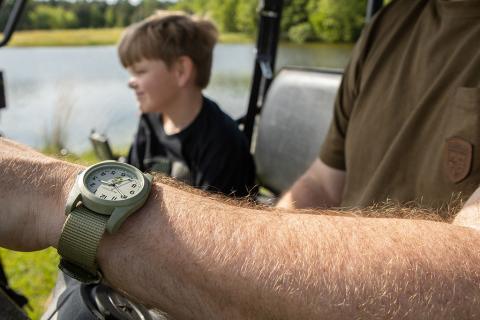Bob Humphrey | Originally published in GameKeepers: Farming for Wildlife Magazine. To subscribe, click here.

The quantity and quality of deer in a particular area can support is directly proportional to the quantity and quality of habitat. The ultimate goal of most managers is to achieve optimum levels of both. Unfortunately, that rarely occurs. Still, there are several ways to improve your situation. One is by reducing the number of deer on the land, which is usually less desirable and often more difficult than anticipated. Another is by improving the habitat and therefore the quality and quantity of food through thinning, planting and establishing food plots. However, your ability to accomplish that may be limited by a number of variables including existing conditions and the amount of time, money and effort you’re willing or able to spend, and even so, that may not be enough to address brief, periodic food shortages. In that case, you may want to consider supplemental feeding; but if you’re going to do it, do it right.
The term “supplemental feed” incorporates a range of options including food plots, mast orchards and crops. For our purposes, we’ll limit it to things not grown directly on the land, i.e. grain, pellets or blocks and minerals. Each can be beneficial if provided at the right time and in the right amount. We must also distinguish between “baiting” and “supplemental feeding.” Despite the title of this editorial, we’ll be talking mainly about supplemental feeding.
Winter

tempting to provide supplemental feed. But if you’re going
to do it, make sure you do it right.
Northern winters are hard enough as nutrition is at its lowest availability. Excessive cold or snow depth only makes matters worse and can oftentimes tip the balance of survival against deer. It’s tempting to provide supplemental winter feed, but you need to be aware of the potential disadvantages. One is disrupting natural patterns. Northern deer often migrate to traditional wintering areas. Feeding can “shortstop” them, concentrating them in areas of insufficient cover making them more vulnerable to severe winter weather and predation.
Deep snow makes travel difficult for both deer and humans. You may be more likely to establish feeding stations close to more accessible and developed areas. But concentrating deer near humans increases the likelihood of deer-vehicle collisions and predation by domestic dogs.
Concentrating deer anywhere at any time has its drawbacks, especially in winter. It increases stress and vulnerability to disease at a time when they’re most susceptible and again, to predation. It also impacts natural habitat. Even when provided ample supplemental feed, deer still eat plenty of natural food, like woody browse. The more concentrated they are, the more they’ll eat in a particular area, which can severely limit forest regeneration. That, in turn, degrades future food availability throughout the year. And it won’t be looked upon too favorably by a landowner in the business of growing trees.
There are also some significant nutritional concerns. Some foods are not easily digested by deer during winter. It can take them several weeks to adjust to a change in diet. They must establish new enzymes and bacteria in their four chambered stomach to help break down the new food source. Supplementally fed deer could die from eating too much high-energy supplemental feed, like corn, at one time (see sidebar: Killer Corn). And if fed highly undigestible food, like hay, they could literally die of starvation even with a full stomach.
The best supplemental winter feed is a block or pellet formulation containing at least 14 percent protein like Record Rack® Sportsman’s Formula or Deer Block. It should also provide sufficient energy (in the form of fatty foods and carbohydrates) and contain enough fiber to promote normal digestive function. Doing so will both enhance nutritional intake and maintain proper rumen function without shocking the system.
Winter-Spring

In most areas the late winter to early spring transition period is the most critical for deer nutrition. Deer have largely exhausted whatever fat reserves they accumulated during the fall. Meanwhile, food is at its most scarce while energy demands are increasing along with the pace of antler growth and development of unborn fawns. Bucks and does require higher levels of protein and energy, which plants are not yet providing - supplements can go a long way toward helping deer through this transition.
The best thing you can provide now is pellets or blocks with higher protein levels (at least 20 percent), which will help and can enhance both nutritional intake and rumen function without shocking the deer’s system. They also need vitamins, which the better blocks and pellet formulations will have.
After you’ve helped deer over this hump, you should already have a high protein perennial crop in the ground ready to sprout when green-up occurs. Then, deer will naturally switch over to the new growth, making it more difficult to get supplemental vitamins and minerals into them. This may be a good time to add mineral blocks with calcium and phosphorous. Ideally, you want something with roughly 15 percent calcium and 9 percent phosphorus, like Full Potential or BioRocks, but similar formulations will suffice. Most mineral blocks also contain salt, which provides no nutrition, but will attract deer and get them to consume more valuable minerals.

nutritional stress for whitetails, a time when the demand for
protein sometimes exceeds availability.
Spring-Summer
By now herbaceous plants are at their most nutritious and abundant period and deer should be able to find most of what they need, with one possible exception. Bucks get the minerals they need for skeletal and antler growth from plants, but if those minerals don’t naturally occur in the soil, plants can’t convert them into a form that’s usable by deer. Now is the best time for mineral supplements containing elements like calcium, phosphorus, magnesium, potassium, sulfur, copper, selenium, zinc and manganese. Antler growth rate is elevated and younger deer need minerals to fill out their frames.
Late Summer/ Fall
As the days grow shorter, a deer’s nutritional needs and thus their diet changes. Something deep down in their DNA tells them it’s time to start laying on calories and what they need most now is carbohydrates and fats. They can find it in natural foods like hard and soft mast and many of the plant species in your cool-season food plots. You can certainly supplement that diet with things like corn, soybeans and blocks or pellets, which now serve the dual purpose of nutrition and attraction. In fact, if you’re going to feed corn through the winter, now is the time to start. Just make sure you continue after the hunting season.
Conclusion
Perhaps the most important thing to remember is that supplemental feeding is just that: supplemental. It should be done in addition to, not in place of providing year-round nutrition through enhancing natural habitat and establishing alternate food sources like food plots and mast orchards. Deer prefer and need a variety of foods throughout the day and throughout the year. Food supplements can help carry them through lean periods and provide a little boost during times of plenty, but you and your deer shouldn’t become dependent on them.































